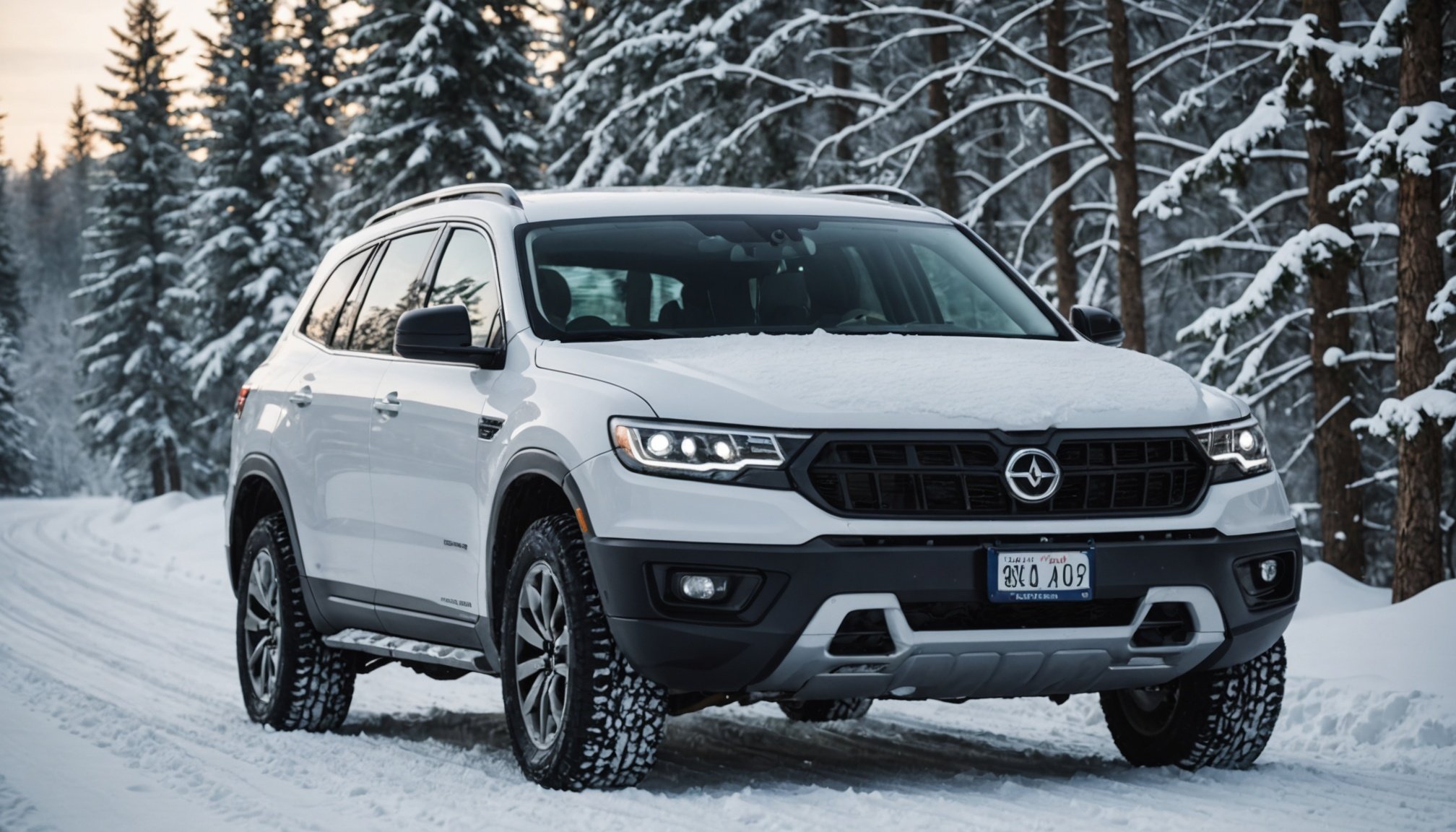Importance of Preparing Your All-Wheel-Drive Vehicle for Winter
Winter vehicle preparation is crucial for ensuring safety during the colder months. Winter driving conditions present unique challenges, such as ice, snow, and reduced visibility, which can affect even the most robust vehicles. To navigate these conditions safely, it’s essential to prepare your all-wheel-drive vehicle adequately.
All-wheel-drive safety is enhanced by these vehicles’ ability to distribute power evenly to all wheels, providing better traction and control on slippery surfaces. However, this advantage does not eliminate the need for preparation. By being proactive rather than reactive in your vehicle maintenance, you enhance your driving safety and reduce the likelihood of accidents or breakdowns.
Also to see : Essential Tips for Maintaining Oxygen Sensors to Achieve the Perfect Air-Fuel Ratio for Peak Engine Performance
Consider the benefits of all-wheel-drive systems, which are specifically designed to improve handling on difficult terrains. They offer:
- Enhanced stability, which is particularly vital on snow-covered roads.
- Improved acceleration, allowing for smoother starts on ice.
- Better distribution of power, which reduces the risk of skidding.
Proactive vehicle maintenance includes checking tire treads, ensuring your brakes are in optimal condition, and using appropriate winter fluids. By taking these steps, you safeguard yourself and others against the harsh realities of winter driving. Ultimately, thorough winter vehicle preparation not only maximises all-wheel-drive safety but also ensures a more enjoyable and secure driving experience.
Also to discover : Essential Tips for Maintaining Your Vehicle’s Differential for Safe Off-Road Adventures
Essential Pre-Winter Inspection Checklist
Preparing your vehicle for winter is crucial. It ensures safety and performance during challenging conditions.
Tire Inspection and Maintenance
Winter tires are essential for traction during icy conditions. They offer superior grip compared to all-season tires. Checking the tire tread depth is important. Ensure it is at least 3 mm to handle snow and slush effectively. Regularly monitor tire pressure, as colder temperatures reduce pressure, affecting control and fuel efficiency. Proper alignment and balancing prevent uneven wear, ensuring safer handling and longer tire life.
Fluid Levels and Conditions
Antifreeze is vital for preventing engine coolant from freezing. Use the appropriate mix ratio to maintain efficiency. Windshield washer fluid with de-icer helps maintain visibility in frozen conditions. Check the engine oil; consider using lower viscosity oil for improved lubrication in the cold. Also, ensure the transmission fluid is at the correct level for smooth operation. Finally, check the brake fluid. It’s crucial for stopping power, and its condition should be optimal to avoid accidents.
Battery Health Check
Testing your battery’s performance in cold weather is vital. Cold temperatures can decrease battery efficiency. Clean the terminals and connections to ensure a strong electrical connection. If your battery struggles in colder months, consider replacing it to prevent unexpected failures. This proactive care ensures your vehicle remains reliable throughout winter.
Key Maintenance Tips for Winter Preparedness
As winter approaches, ensuring your vehicle is prepared for the cold is essential. Proper maintenance can not only keep your vehicle running smoothly but also guarantee safety on icy roads. Let’s dive into some crucial areas:
Brake System Check
Effective braking is paramount on icy roads. Start by inspecting your brake pads and rotors. Look for wear beyond normal levels, as ineffective brakes can lead to dangerous situations in snowy conditions. Ensure your brake fluid levels are topped up, as they play a critical role in maintaining responsiveness.
When considering upgrades, winter-specific braking systems might be advantageous. These systems are designed to cope with the lower grip levels found during winter. Consult your mechanic about suitable options for your vehicle.
Wipers and Lights
Maintaining visibility during snowfall or heavy rain is crucial. Regularly check your wiper blades for signs of wear or damage and replace them with winter-specific variants for optimal performance. Moreover, ensure all vehicle lights are functioning. Headlights, rear lights, and indicators must be unobstructed and efficiently lit, providing clear visibility to you and other drivers.
Heating and Defrosting Systems
The heating system supports passenger comfort during colder months. Test the defrosting capabilities to make sure windows are clear. Additionally, check the cabin air filters to ensure clean, allergen-free air circulates throughout the car, enhancing both visibility and air quality.
Recommended Safety Equipment for Winter Travel
Embarking on a winter journey requires careful preparation. Winter travel safety gear is crucial for ensuring a smooth trip despite unpredictable conditions.
Emergency Kit Essentials
An effective emergency kit serves as the backbone of any safe winter voyage. It should include basic first aid supplies such as bandages, antiseptic wipes, and pain relievers. These can help manage minor injuries or ailments until professional help is available. Moreover, essential tools like screwdrivers and wrenches come in handy for quick fixes.
Consider packing blankets, non-perishable food, and bottled water to stay warm and nourished if stranded. It’s better to have these supplies on hand even if they seem unnecessary at first.
Winter Driving Gear
Driver preparedness begins with having the right winter driving gear. Keep extra clothing and sturdy footwear available in your vehicle. These items will give you comfort during long drives and when stepping out for emergencies. Vehicular emergencies require being equipped with tools like flares to signal distress and jumper cables for a quicker vehicle start in freezing temperatures.
Technological Safety Aids
Technology plays a pivotal role in ensuring safety during winter travels. Applications that provide real-time updates on weather and road conditions can aid in planning safer routes. Furthermore, GPS systems designed for winter navigation offer tailored guidance, preventing struggles with unanticipated detours or roadblocks.
Strategies for Handling Winter-Specific Challenges
When dealing with winter driving strategies and the challenges of snow and ice, preparation is key. It’s crucial to combine the right techniques with vehicle capabilities, such as AWD performance, to enhance safety and control during the cold months.
Managing Slippery Conditions
Navigating icy and snowy roads requires a few essential techniques. Firstly, maintaining a safe following distance is paramount; it provides the necessary time to react to sudden changes. Adjusting acceleration and braking is critical; apply gentle, gradual pressure to avoid skidding. When facing corners, adopt a smooth approach to maintain traction without losing control.
Preparing for Snow Accumulation
Deep snow and drifts can present substantial challenges. It’s vital to assess the depth and have a shovel and traction aids available. Knowing when to avoid routes is as important as knowing how to tackle them. Being aware of alternate roads or the possibility of postponing travel aids in safer decision-making. If immobilized, strategies like slowly rocking the vehicle back and forth can help regain mobility.
Navigating Severe Weather Conditions
Assessing whether travel is safe during severe weather requires staying informed about snowstorms and potential whiteouts. It’s crucial to have a backup plan, such as identifying nearby accommodations or having emergency supplies in case of unexpected travel disruptions. Understanding these elements ensures readiness and resilience in harsh winter conditions.











